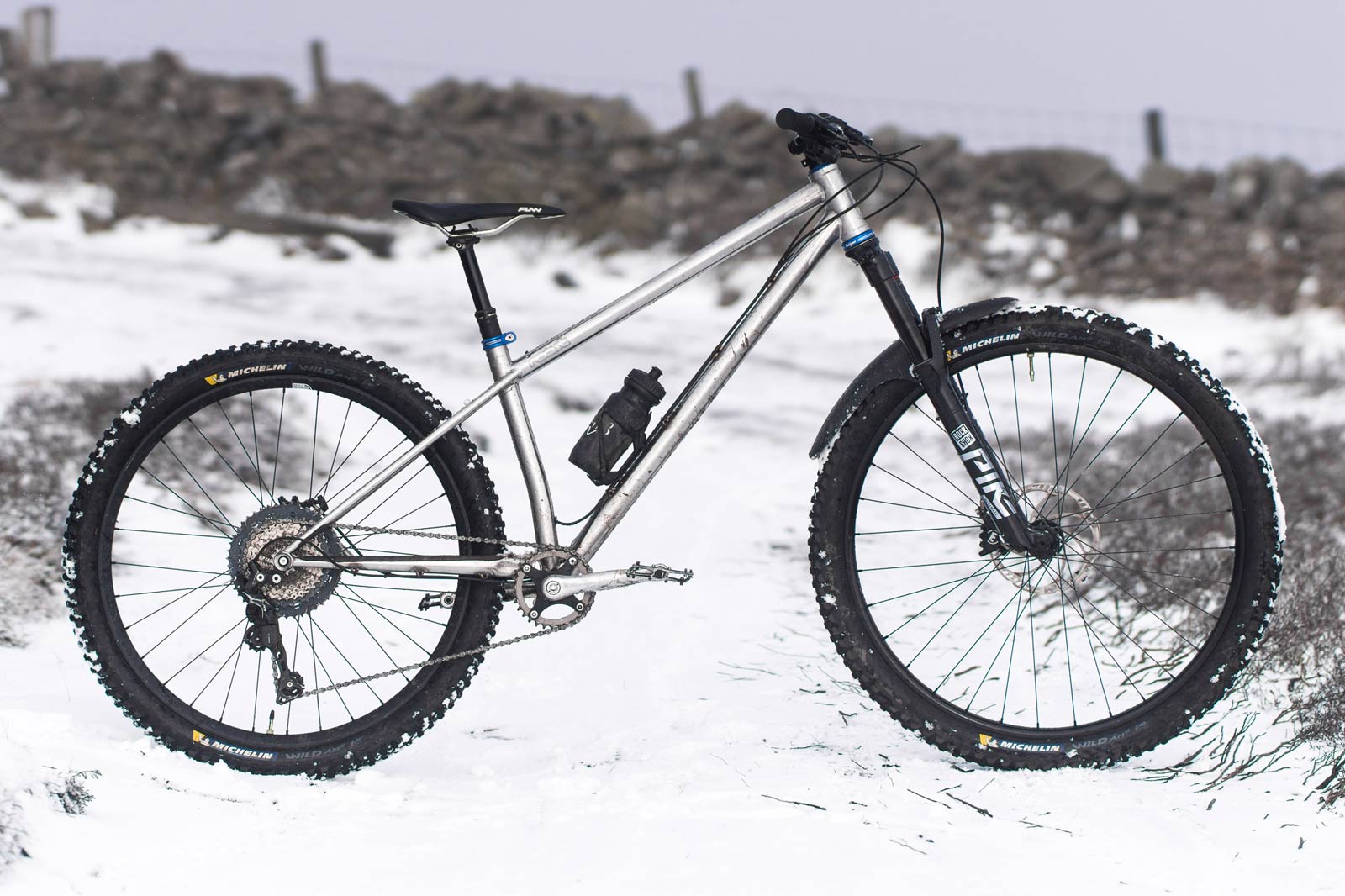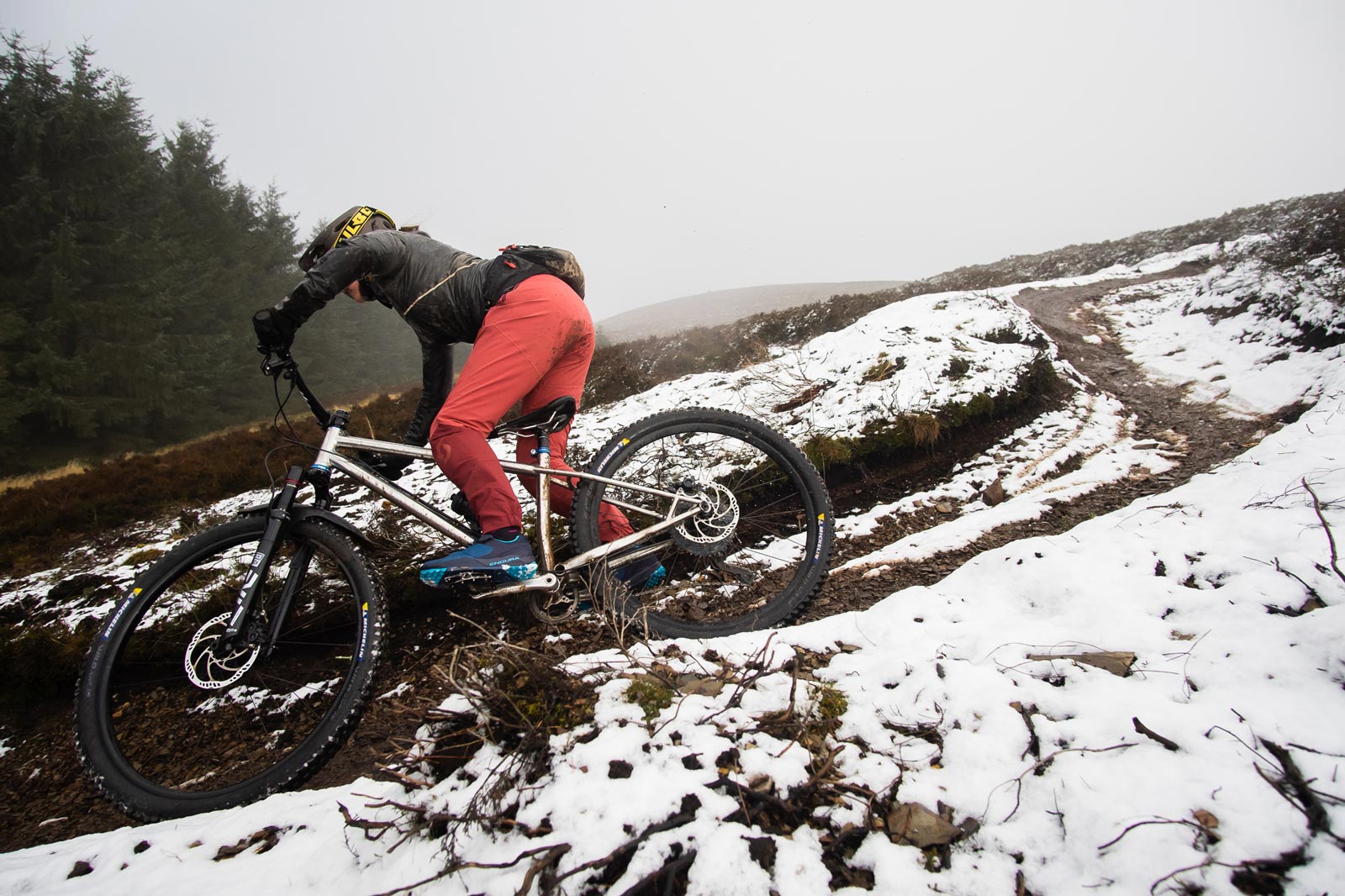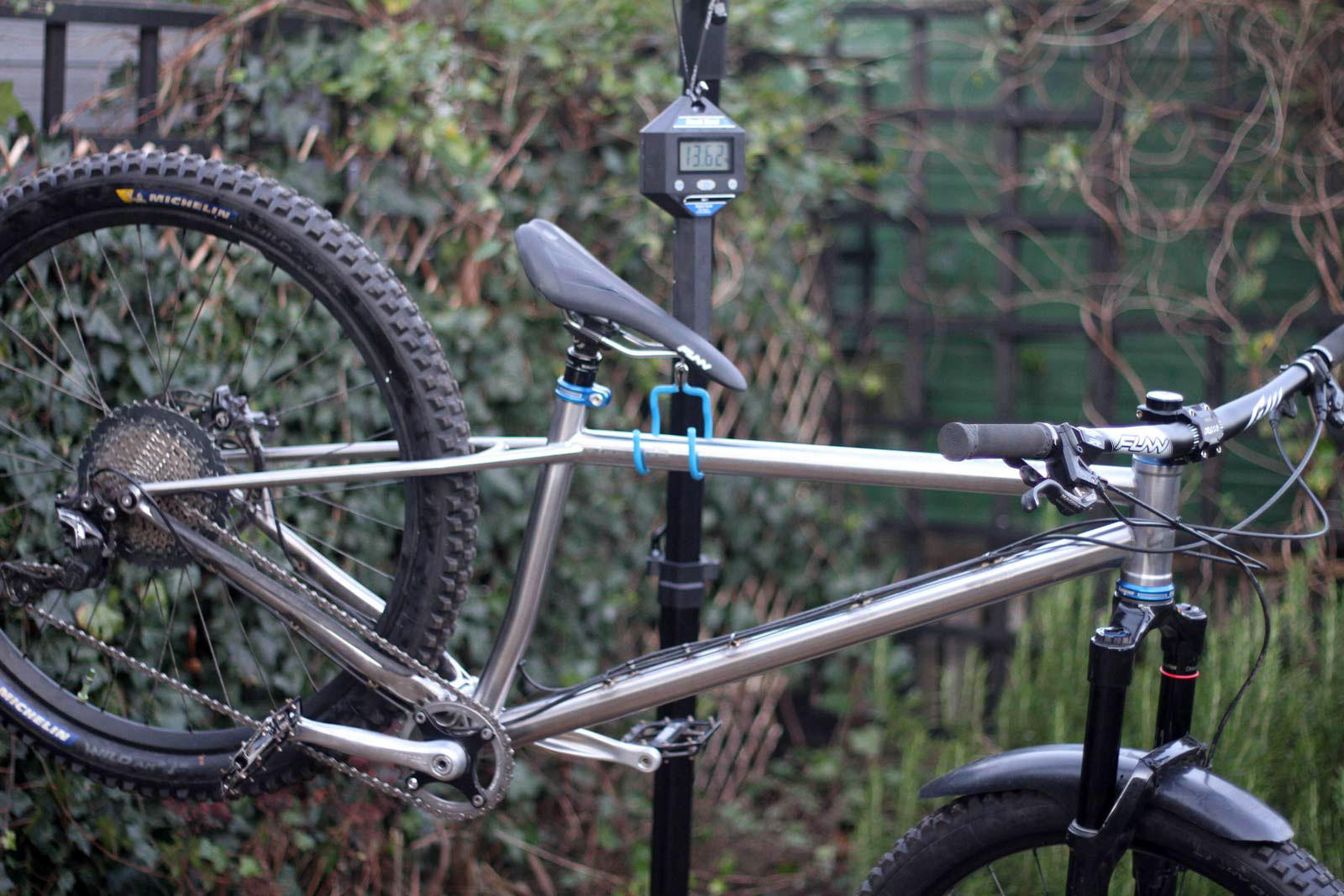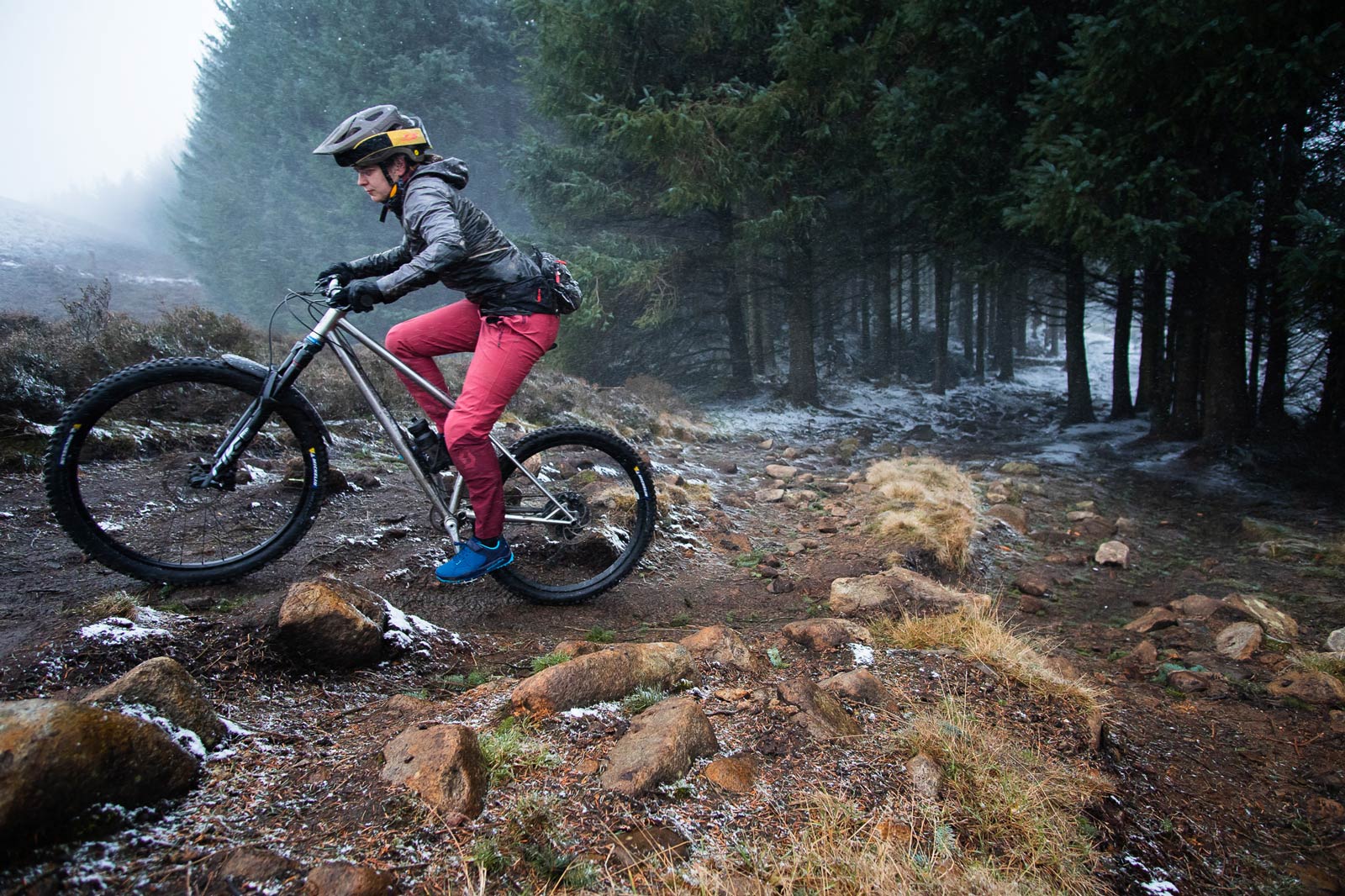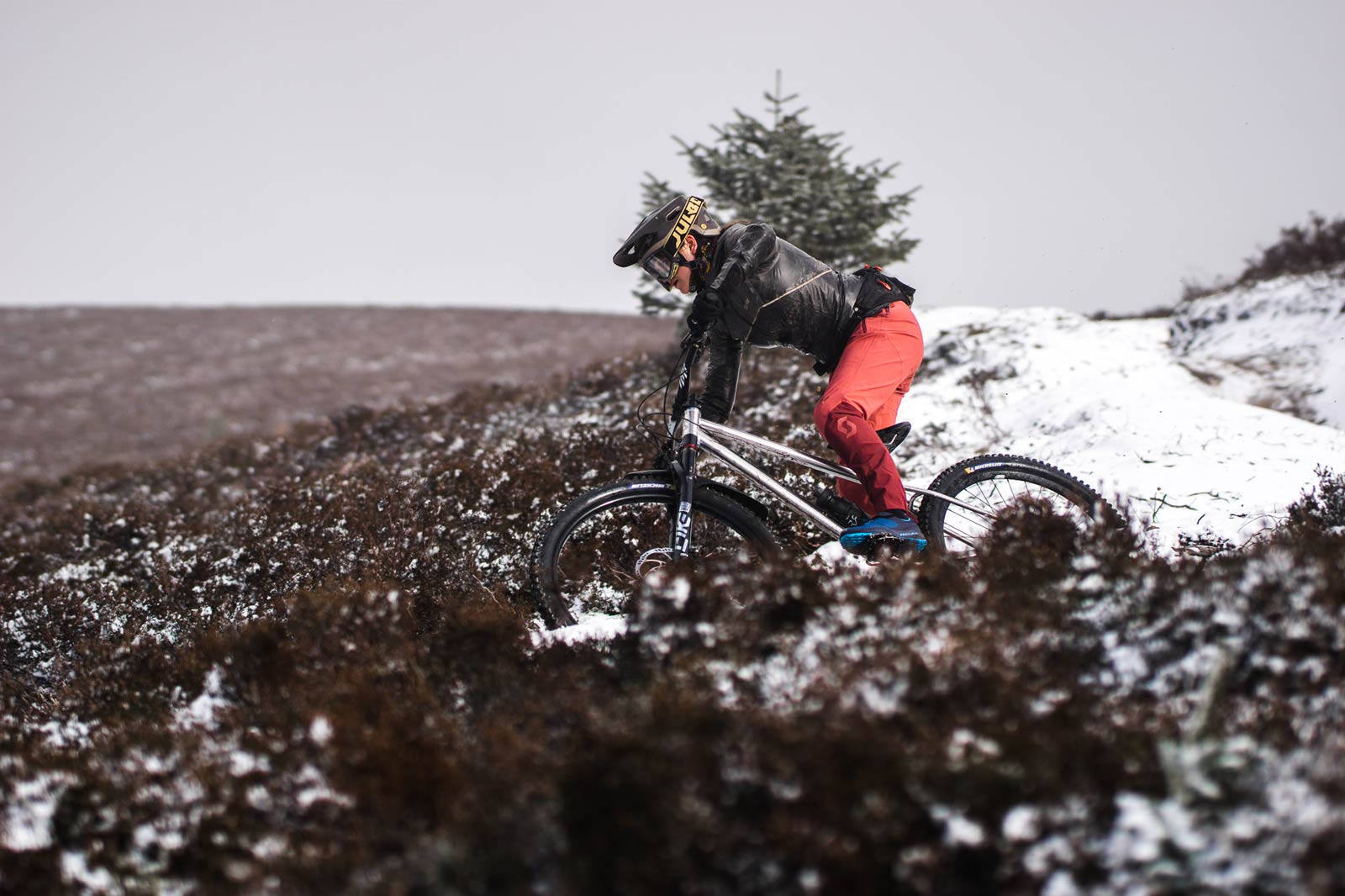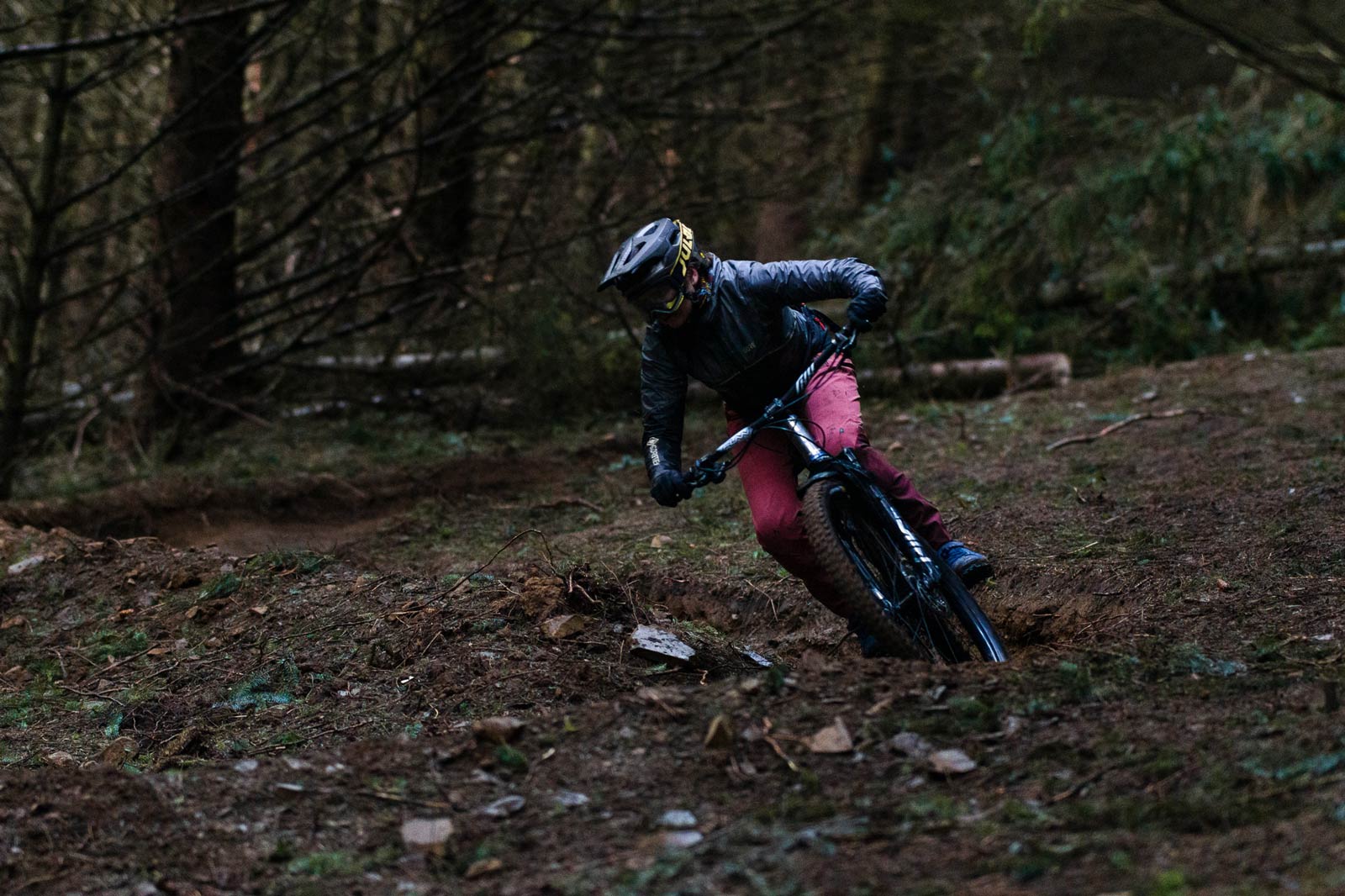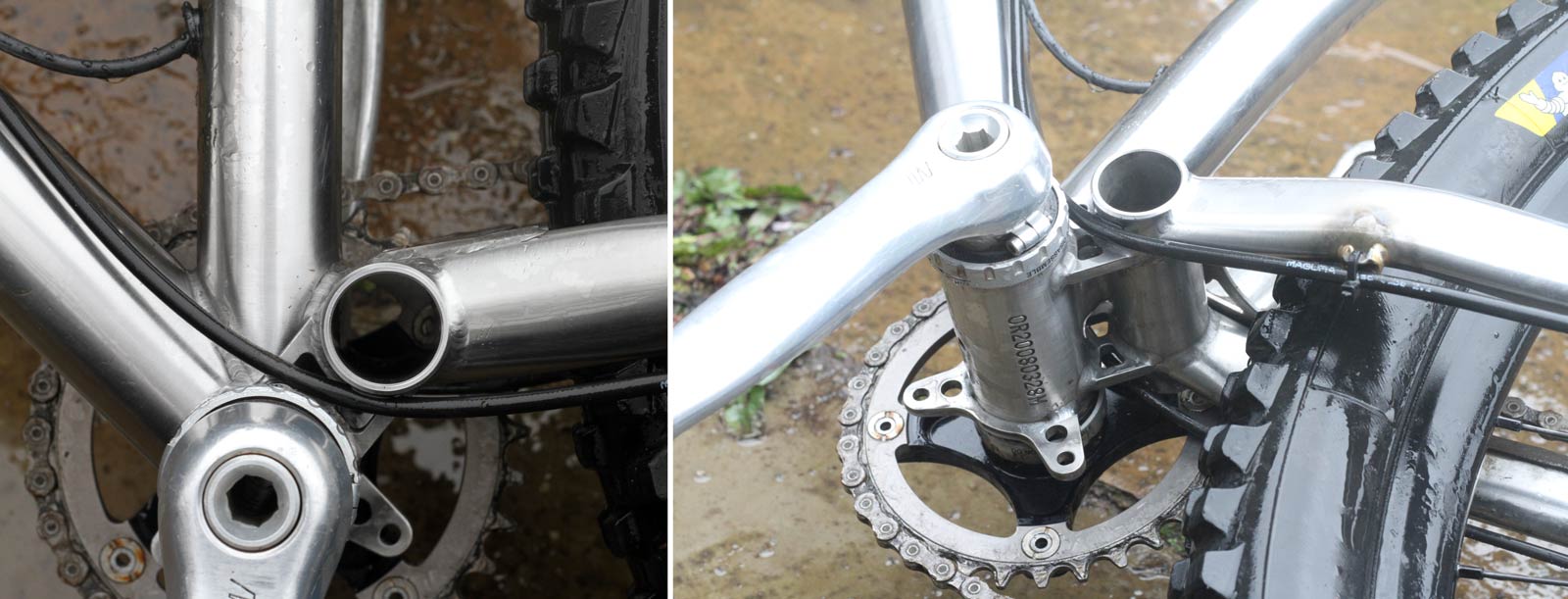Dry January saw me mincing about the Tweed Valley aboard a new hardtail from Starling Cycles; the Roost. This stainless steel mixed-wheel size eye-catcher is the first hardtail to slot into the UK manufacturer’s lineup. At launch, Starling were pretty keen not to give it the “sickly” hardcore hardtail tagline, though with a 64° head tube angle, mullet wheelset and generous tire clearance, we feel it certainly doesn’t sit too far outside of that category.
When founder Joe McEwan offered up a pre-production Roost for testing, I was, admittedly, fairly apprehensive about taking it on. It’s been a long time since I rode a hardtail with any frequency, so the thought of pointing one down some of the local EWS-worthy enduro tracks was a little daunting. On top of that, at 163cm tall (5ft 4″), I actually sit outside of the recommended size range for the medium frame – the smallest size available. Weighing up the 440mm reach with the 410mm seat tube and 76° seat angle, I decided to throw caution to the wind. Boy, am I glad I did!
Action Shots by Blair Kemp
Review: Starling Roost Hardtail Mountain Bike
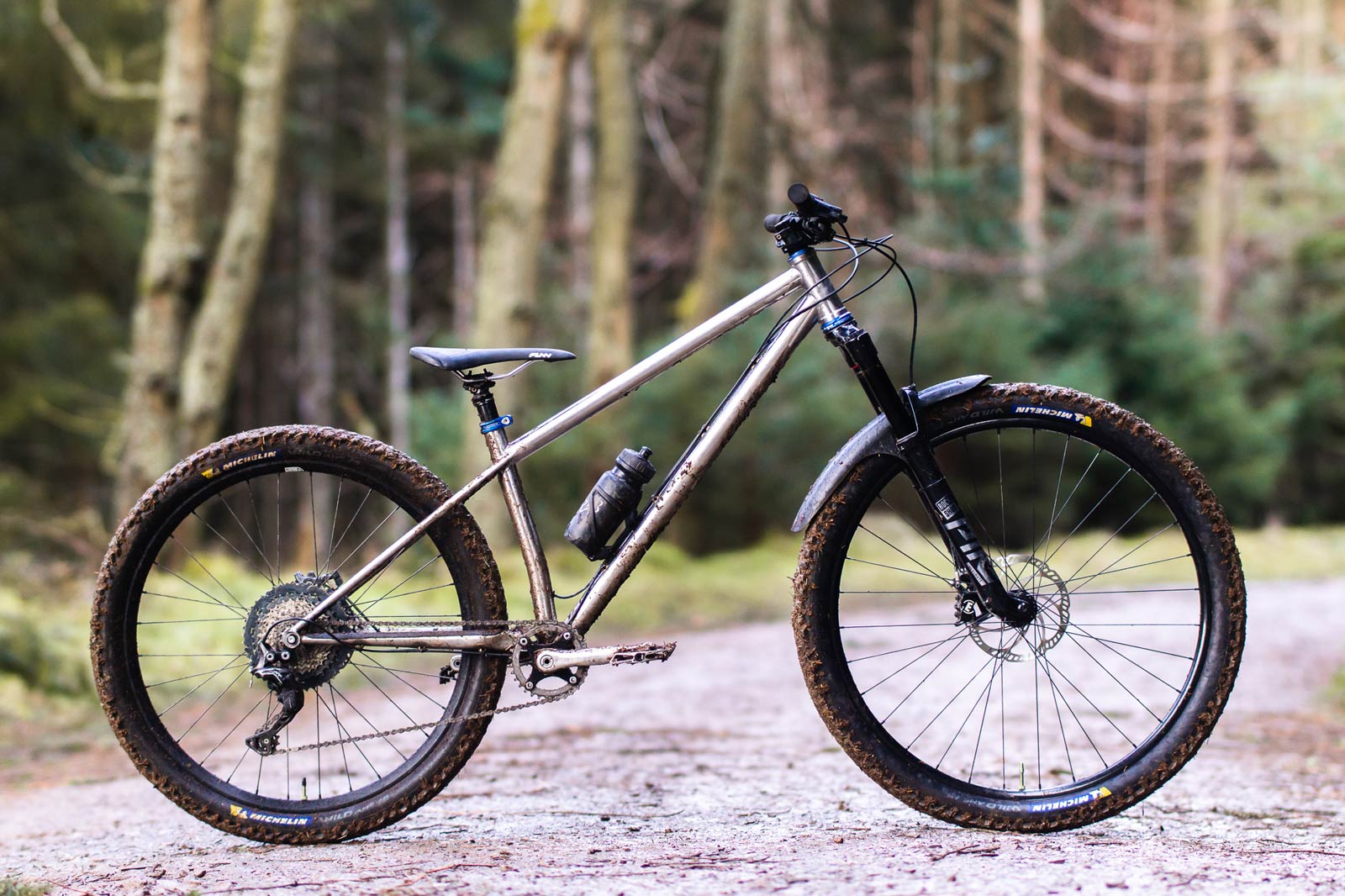
Not all bikes rolling out of Starling Cycles get the Stainless Steel treatment seen on the Roost hardtail, a bike that got more than a handful of “Ooh, a titanium hardtail” comments while out on the trails. Neither the price, nor the weight of this medium frame can be compared to what you might expect of a titanium equivalent.
A Starling Roost frame will set you back £1,220, and weighs a claimed 2.6 kg. The £3560 complete bike tested here weighed in at 13.62 kg (with a set of DMR Vault Midi pedals).
Before we get into the riding experience, let’s take a look at some highlight components of the build that indicate the Roost’s true intentions. Seated to the Stan’s Arch wheelset is a set of Michelin Wild AM2 2.4″ tires, though Starling claim there is sufficient clearance for up to 2.8″ tires. What you can’t see in these pictures is the CushCore Pro tire inserts (front and rear). For me, the inclusion of tire inserts on what Starling founder, Joe McEwan, claims is a “ride-wherever, ride-whatever, tough-as-nails stainless do-it-all”, is rather befitting. I ran just 16 PSI in each tire, though do bear in mind that I weigh around 60 kgs soaking wet.
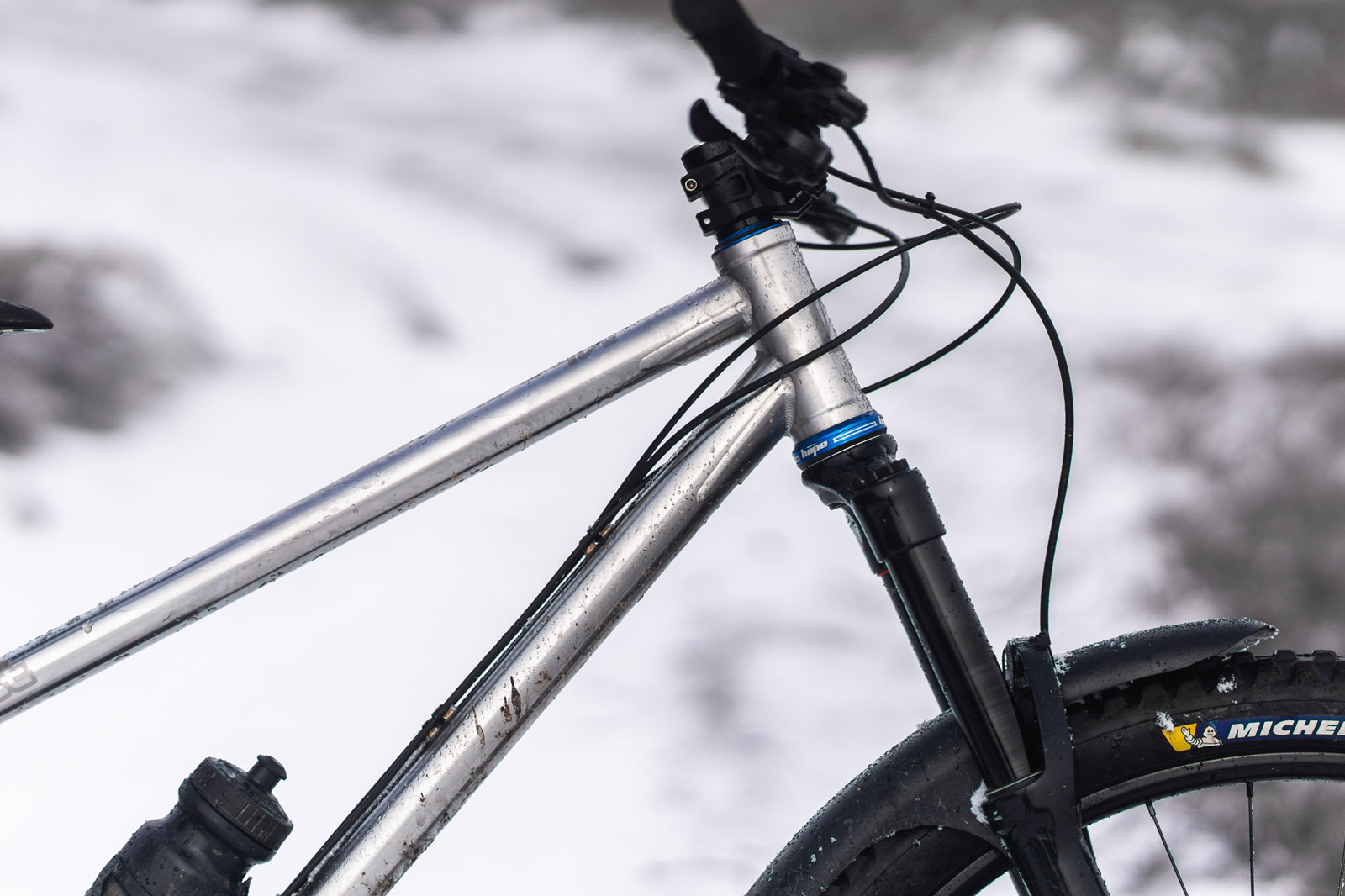
Up front we have the RockShox Pike 140mm fork with the top-end Ultimate damper. This medium build with a 410mm seat tube came with a 160mm BikeYoke Revive dropper, a good fit for my 163cm frame.
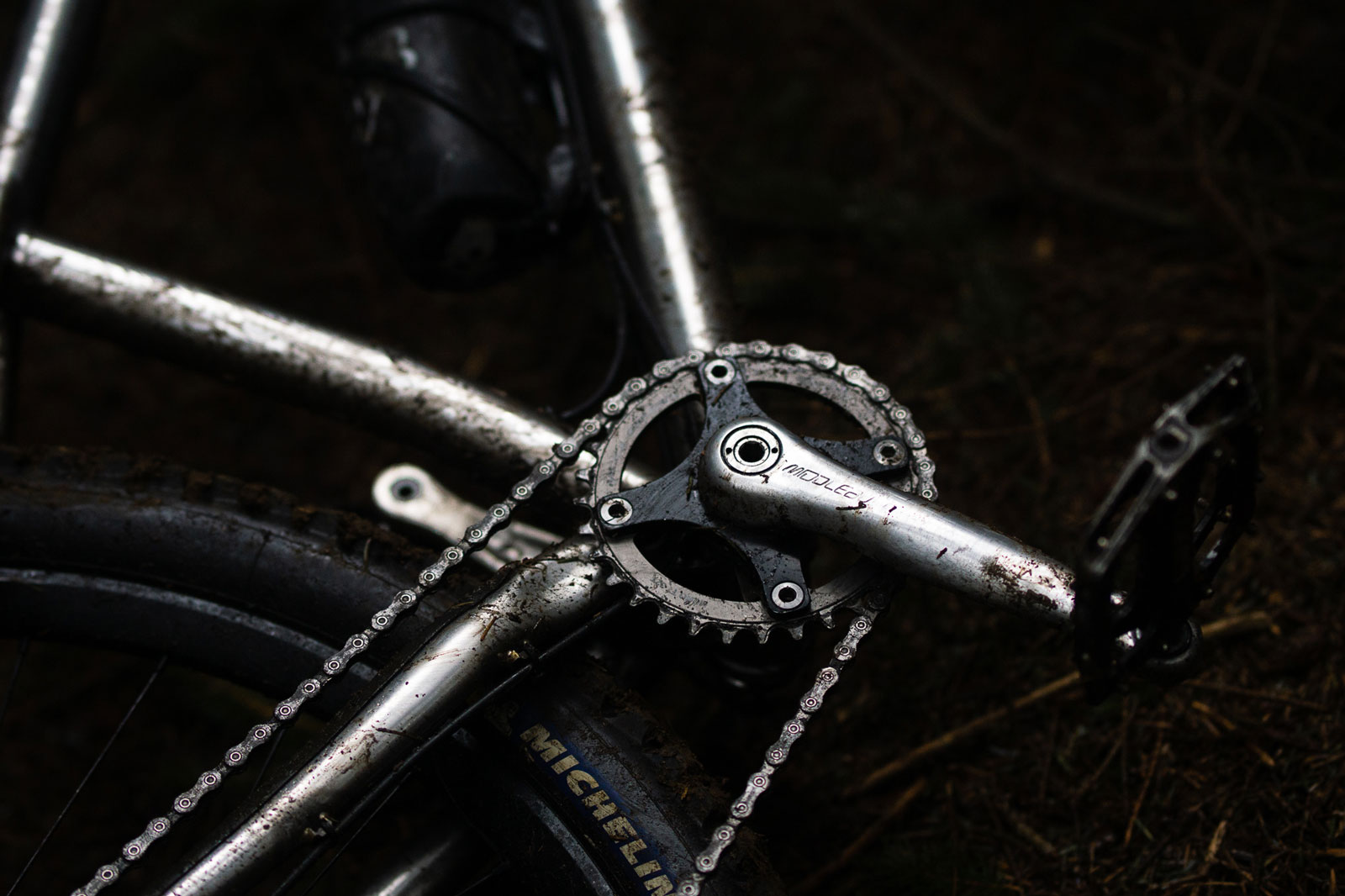
Also contributing to that 13.62kg weight is a Middleburn RS8 X-Type Crankset, a 35mm Funn Equaliser stem and alloy bar, Hope headset and seat clamp, and an 11 speed cassette with Shimano XT derailleur and shifter. MT Trail Sport brakes round off the build (4-pistons up front, 2 in the rear).
Ride Impressions
Jumping on the Starling Roost for the first time, it didn’t feel as long as I thought it might. The 76° seat tube angle put me in a commanding position over the bottom bracket for a direct and efficient pedaling experience. I did run the saddle pushed forward along the rails, though this is something I like to do with almost every bike I ride. If it were mine, I would have of course cut the handlebar down from its 780mm to 740mm, not just because it was a bit too wide for my shoulders, but also because the Tweed Valley trails can be narrow, and their bordering trees unforgiving.
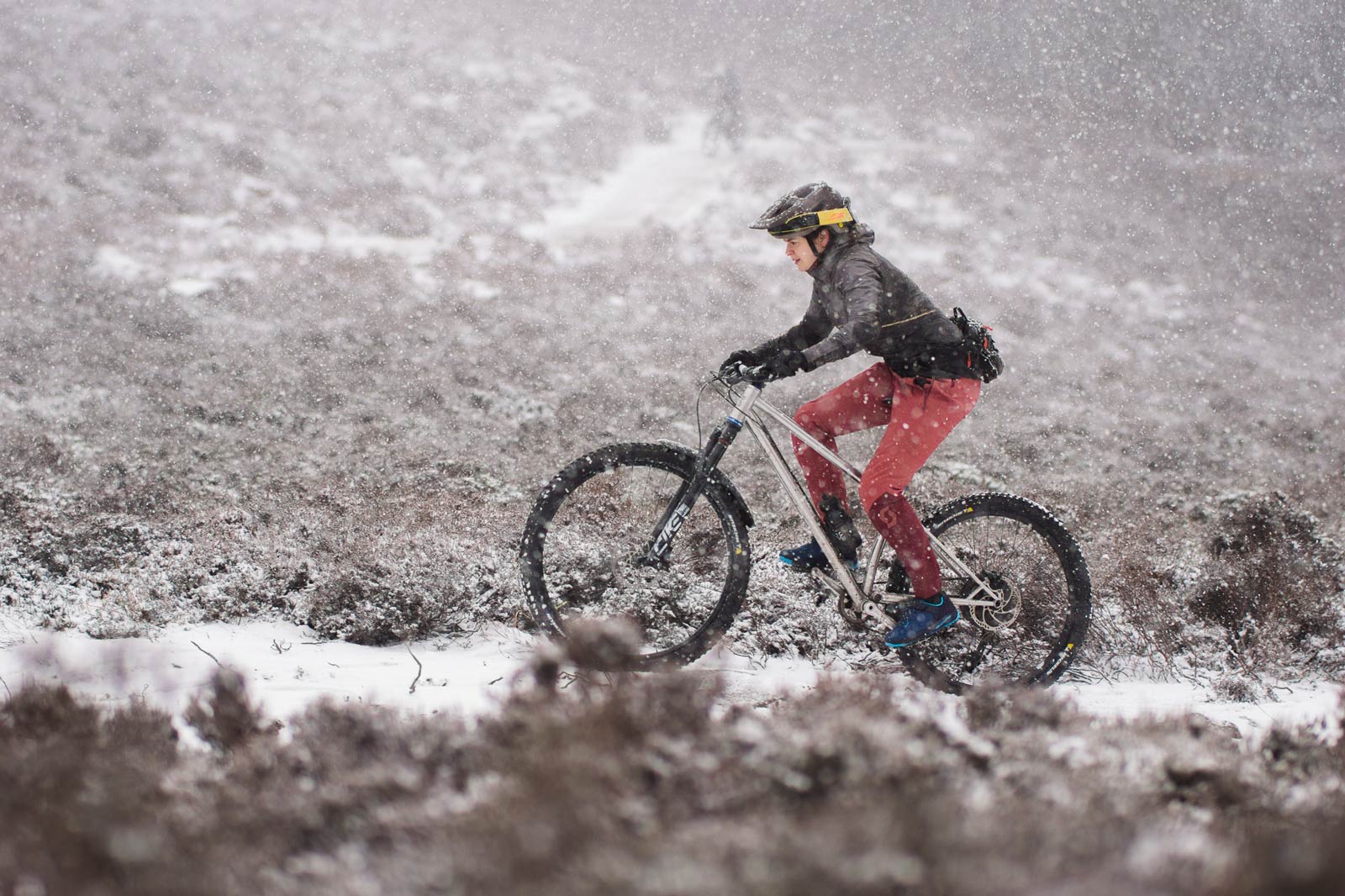
For seated pedaling, the fit was a little off. My back was at a greater lean angle than I am accustomed to, something that a narrower bar would have gone some way to addressing. I found it comfortable enough for 3 hour rides, but would likely experience some lower back trouble for an all day epic. At this point, I’ll remind readers that the medium frame is recommended for riders 167-177cm tall (I am 163cm tall). While I might agree with that recommendation in the case of seated pedaling, the extra length was a complete non-issue for descending.
Pointing the Roost downhill, it felt very balanced and composed. I was expecting to feel as though my shins were about to pass through my knee caps, and I certainly did on some of the local downhill tracks, but the steel frame seamed to do a decent enough job of damping trail chatter on the mellower, slower enduro trails. Don’t get me wrong, a full run was still a hell of a workout for the quads.
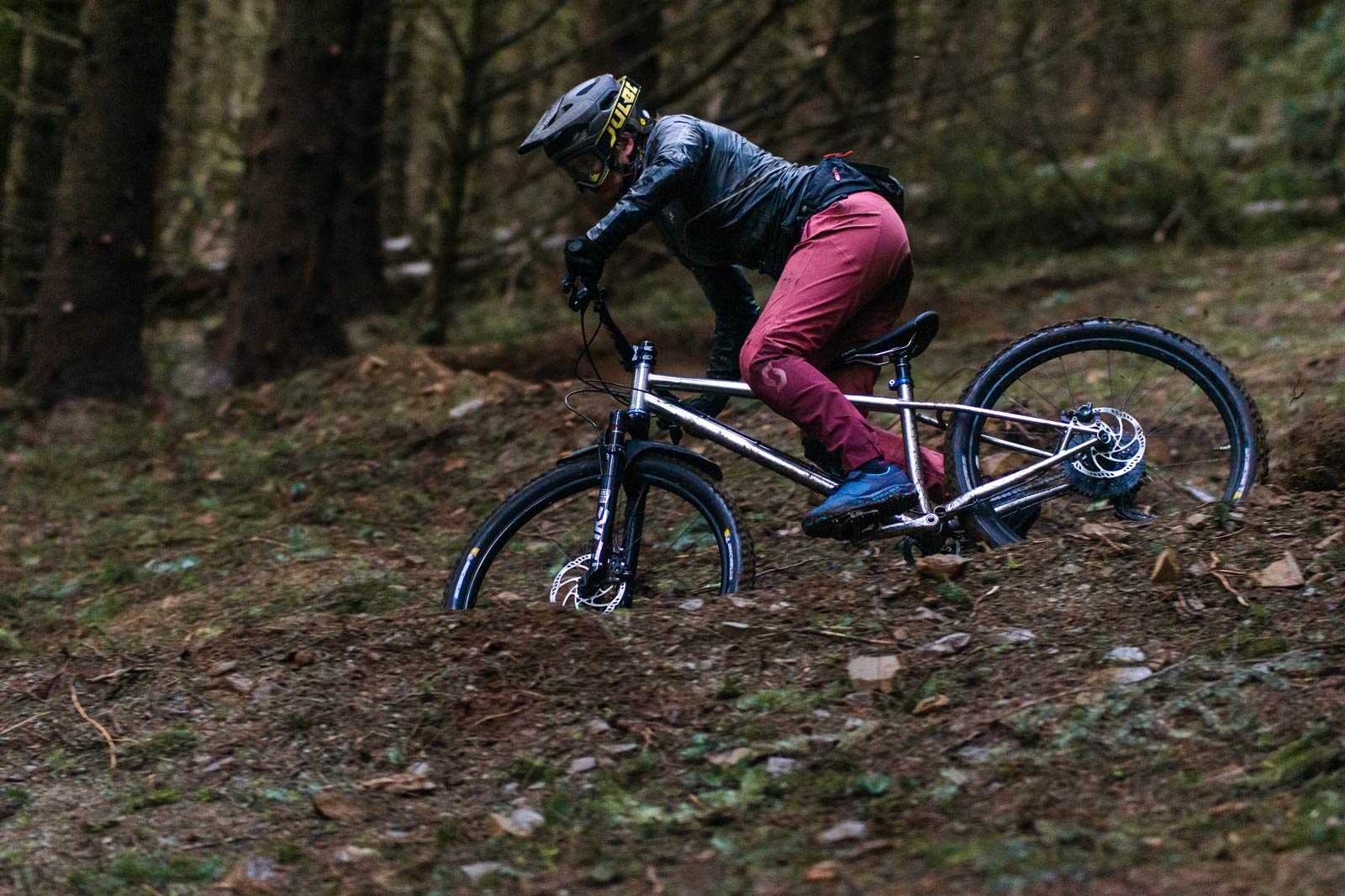
The Roost corners incredibly well. The 425mm rear-center and very low bottom bracket (50mm drop from the 27.5″ rear wheel axle) work like a dream, making the bike feel like it slots perfectly into almost every bermed corner. Then of course there’s the progressive increase in front wheel traction that is a feature of all hardtail mountain bikes; as the fork is loaded up through a turn, the distance between the BB and the front tire’s contact patch decreases, forcing my weight ever more over the front wheel demanding traction through turns. It’s a great combination.

I did get my comeuppance with the low bottom bracket, however. Occasionally, I found myself dragging the inside pedal along the chamfered edge of the trail bench which did make for some hairy moments. That said, the local trails are extremely over-ridden (especially since Storm Arwen eliminated a big chunk of them) to the point where our small but dedicated army of trail builders can’t cope with the speed at which these deep channels are appearing.
For terrain such as this, I’d lean toward recommending the Starling Roost to more experienced bike handlers who can take full advantage of the great cornering characteristics that come with a low bottom bracket, but also the awareness to ride accordingly through rocky chunder, or down steep narrow chutes bordered by stumps.
I had an unrealistic amount of fun testing this bike. The thrill associated with the unmatched immersive riding experience of a hardtail, paired with the Roost’s incredibly capable set of geometry figures and its smash-worthy spec list, ensured there was a huge smile on my face at the end of every single ride. From social laps of the local enduro trails, fitness-building blasts around the trail centre reds, and moor-top XC-style journeys, the Starling Roost delivered every time.
Some additional notes on frame design
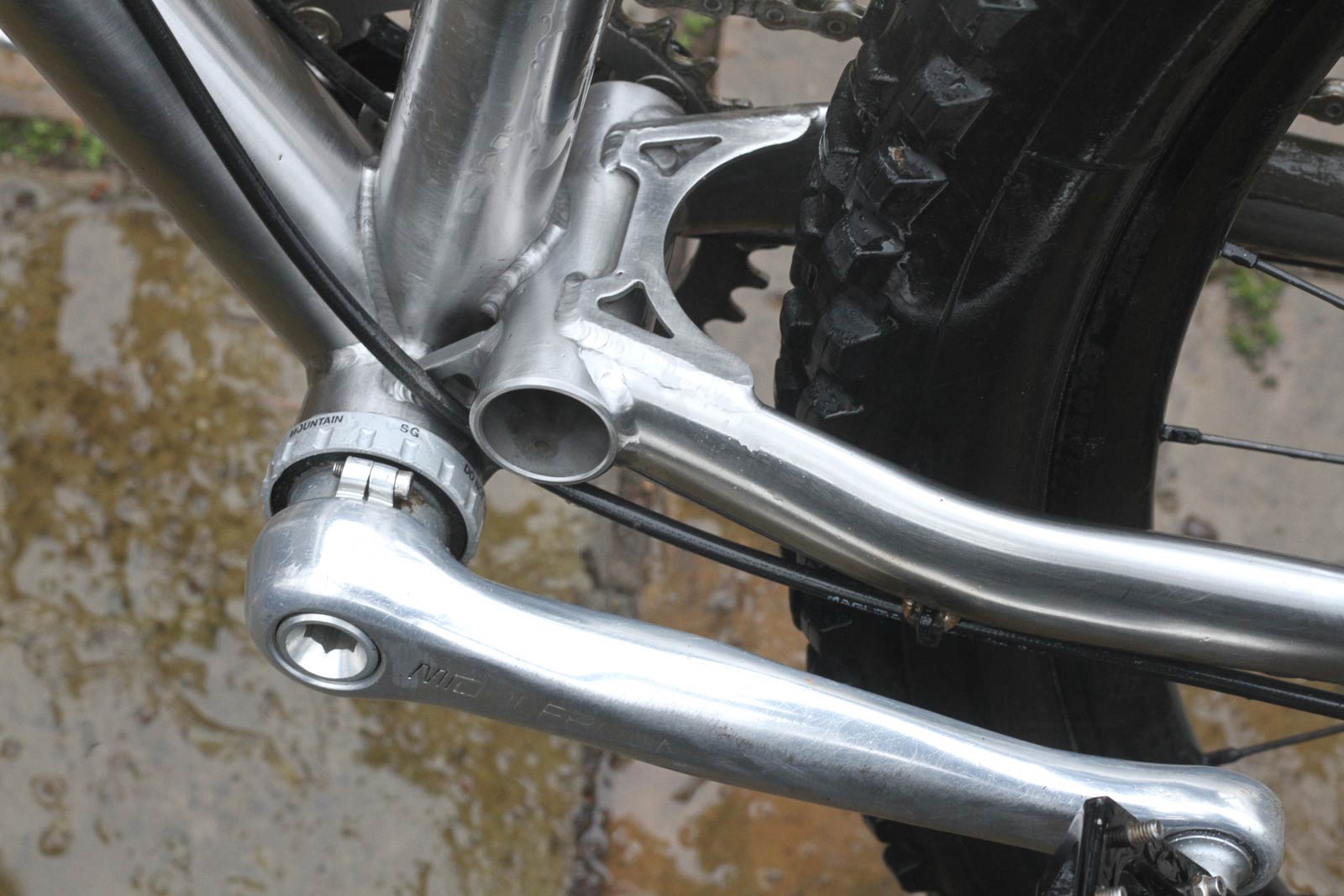
The chainstay-bottom bracket yoke is sure to be a point of interest on the Starling Roost. It is one that has evolved directly from the Starling full suspension bikes like the 29″ Murmur, which incidentally also got a limited edition run of stainless steel frames. Frame designer, Joe McEwan tells us it delivers everything they wanted from this area; it is structurally sound while offering decent clearance for higher volume tires.
The photos Starling shared at launch of the Roost didn’t really show this region in any great detail so we thought we’d take the opportunity to zoom in here. As you can see, the tubular yoke is connected to both the seat tube and the BB via two small machined parts. Also noteworthy here is the ISCG-05 tabs for the mounting of bash guard, something that riders should definitely consider investing in for the Roost given its low bottom bracket.
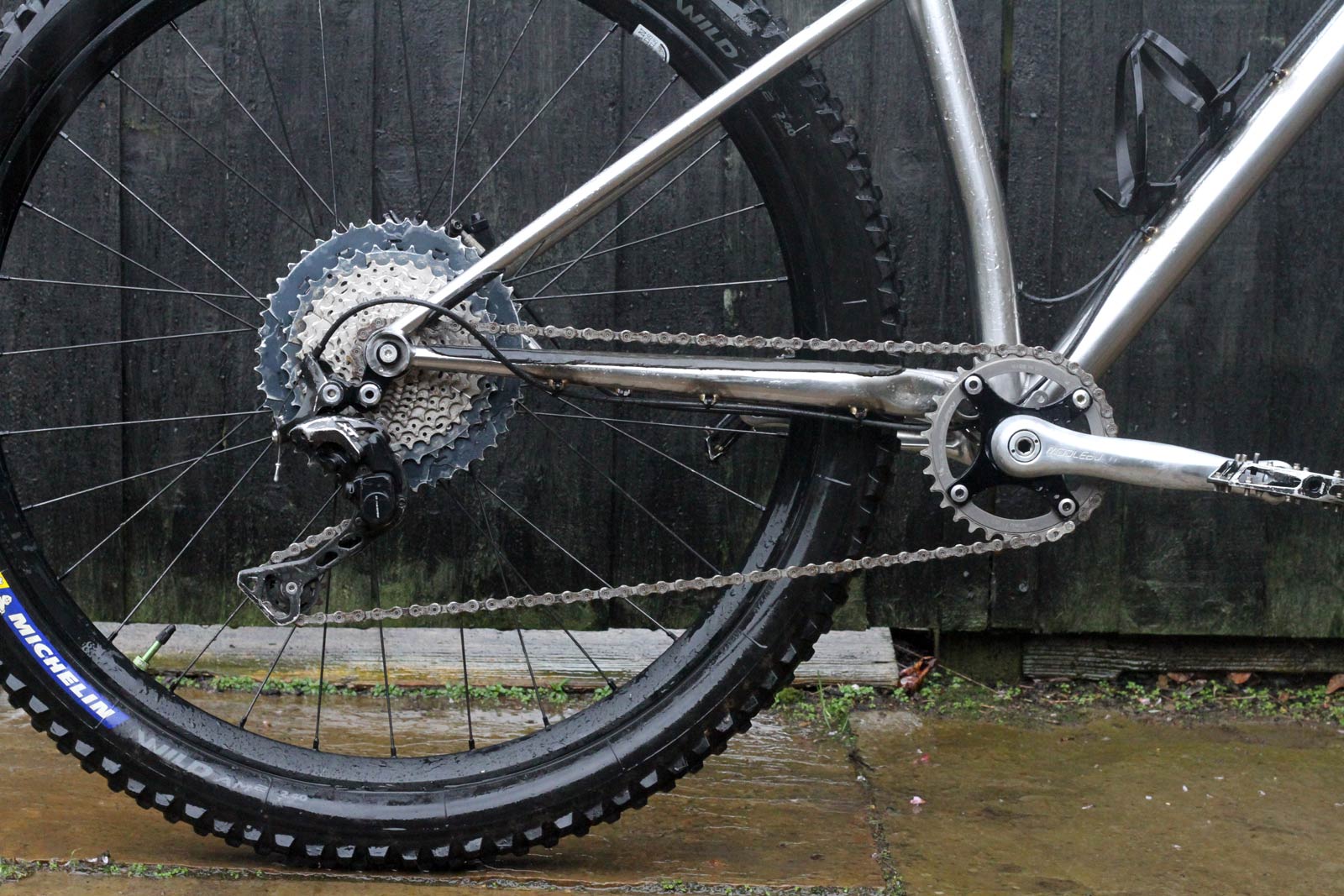
Pricing & Availability
The frame only retails at £1,220 and is available to pre-order now with shipping due in April ’22. The Starling Roost is available in a M-XL size range (see here for complete set of geometry figures), all of which run the mixed-wheel setup. Starling are able to offer complete bikes, like the one tested here, with components available from Ohlins, Rockshox, Hope, Funn, Magura, Bike Yoke, Michelin and CushCore.
